-
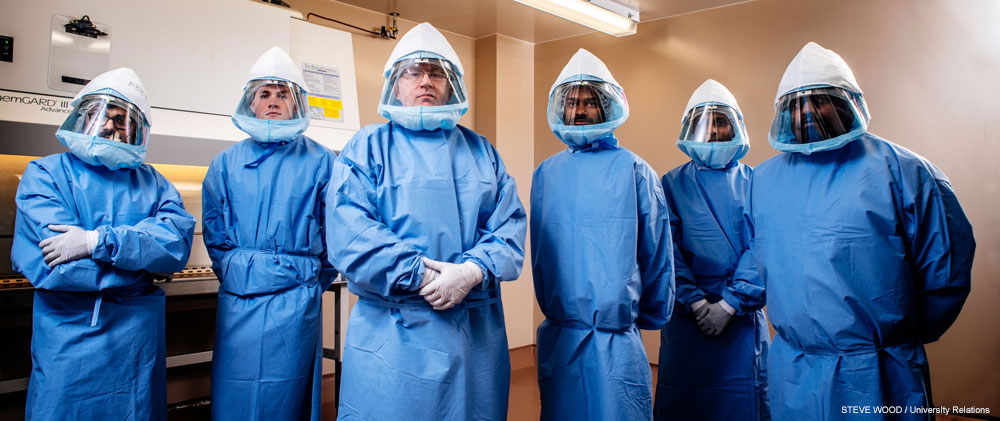
Meet the scientists who volunteered to face the coronavirus up close
While most of the world has done its best to stay as far as possible from SARS-CoV–2, the coronavirus that causes COVID–19, a select group of researchers moved closer. For some dedicated scientists at UAB, that means spending workdays and nights a few inches away from the planet’s Public Enemy No. 1. To find a way to stop a killer like SARS-CoV–2 you must look it in the face — culturing the virus in a lab and keeping stocks on hand to test new treatments and perform crucial experiments.
-
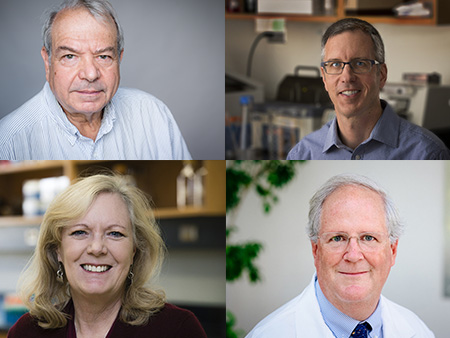
“Essentials of Modern Neuroscience” written by UAB professors, bridges gap between basic and clinical neuroscience
“Essentials of Modern Neuroscience” was created by Franklin R. Amthor, Ph.D., professor of psychology in the College of Arts and Sciences; Anne B. Theibert, Ph.D., professor of neurobiology; David G. Standaert, M.D., Ph.D., John N. Whitaker Endowed Chair of the Department of Neurology; and Erik D. Roberson, M.D., Ph.D., Rebecca Gale Endowed Professor of Neurology and Neurobiology. Theibert and Amthor led the basic science section, while Roberson and Standaert led the clinical section. About 30 additional authors, mostly UAB faculty, wrote individual chapters. The book is published by McGraw-Hill Education.
-
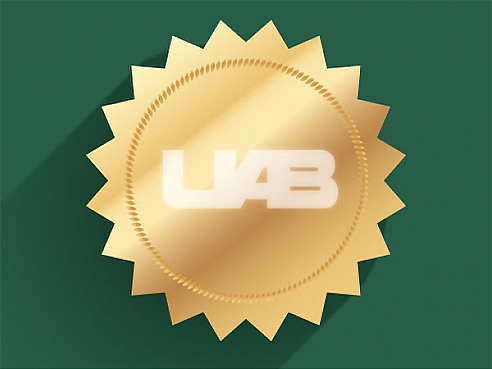
4 named to endowed chairs and professorships
The University of Alabama System Board of Trustees appointed Mona Fouad, M.D., the inaugural holder of the Edward E. Partridge, M.D., Endowed Chair for Cancer Disparity Research during its June 4 meeting. Matthew Macaluso, D.O., was appointed the first holder of the Bee McWane Reid Endowed Chair in Psychiatry and Neurobiology in the Department of Psychiatry and Behavioral Neurobiology.
-
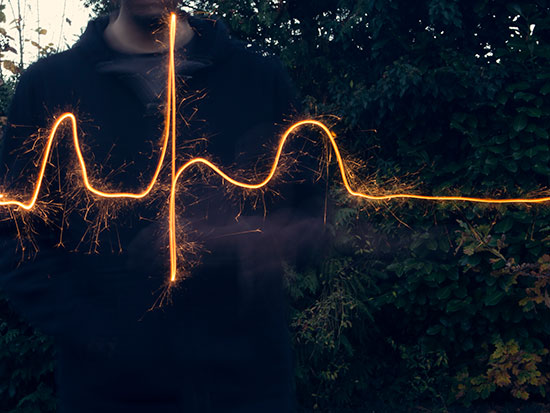
Discoveries on deck: Predicting uncontrolled bleeding
During the past 15 years, Limdi and colleagues have identified clinical and genetic factors that account for response to anticoagulant and antiplatelet therapies. These blood-thinning drugs, including warfarin (Coumadin) and clopidogrel (Plavix), are widely used to prevent clotting in patients at risk for stroke, atrial fibrillation and other conditions. Among other findings, the investigators have demonstrated that race influences the dose requirements for warfarin, and a simple genetic test to determine a patient’s response to clopidogrel can significantly reduce the risk of cardiovascular events in patients receiving a heart stent.
-
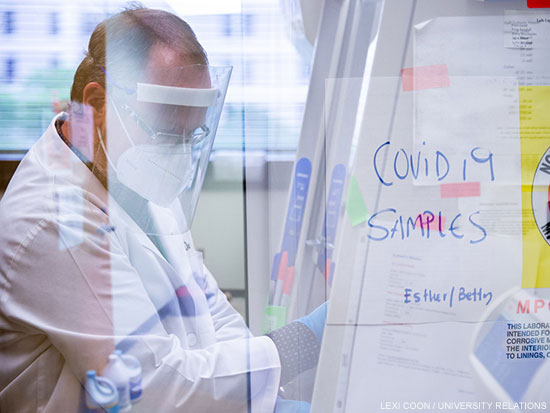
Researchers are creating a coronavirus showdown to settle pressing antibody problems
No one wants to get coronavirus. Unfortunately, most everybody already has. Not THE coronavirus, as in SARS-CoV-2, the novel coronavirus that causes COVID-19, but OC43 and HKU1, two other members of the same beta-coronavirus family. "Twenty percent of what we call colds are caused by these two coronaviruses that circulate widely in humans," said Troy Randall, Ph.D., professor in the School of Medicine departments of Medicine and Microbiology. "Most of us have been infected at least once or twice in our lifetimes by these two."
-
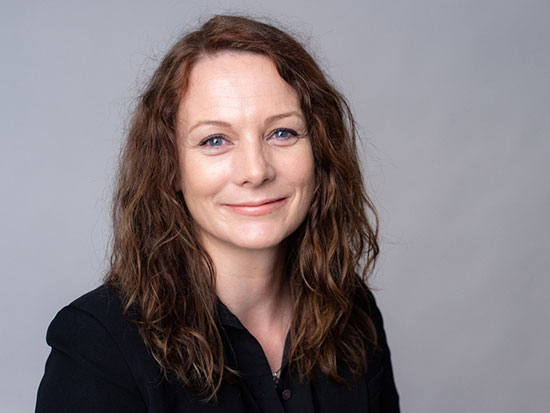
Open source: How data scientist Liz Worthey is bringing precision medicine to the people
In some ways Elizabeth Worthey, Ph.D., is a typical nerd. She likes having lots of computer screens and solving puzzles and nothing so much as coming up with novel ways to use software to solve complex problems. Unlike most geeks, though, Worthey is intimately familiar with her own source code. A chunk of her laptop hard drive is dedicated to a complete copy of her DNA, which she had sequenced nearly a decade ago.
-
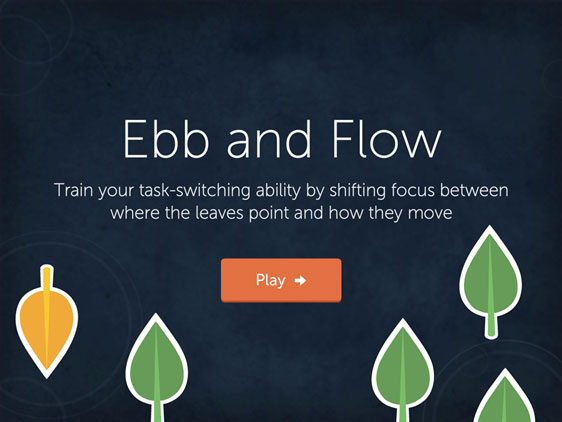
Research Computing interns are hands-on in a world that is always changing
A new study by Sharafeldin at UAB is pointing to a better method of identifying patients at highest risk of cognitive problems after BMT, and her work was highlighted at the American Society for Clinical Oncology’s annual meeting in June. Now she is testing an innovative therapy to bring brains back from the fog — computer games.
-
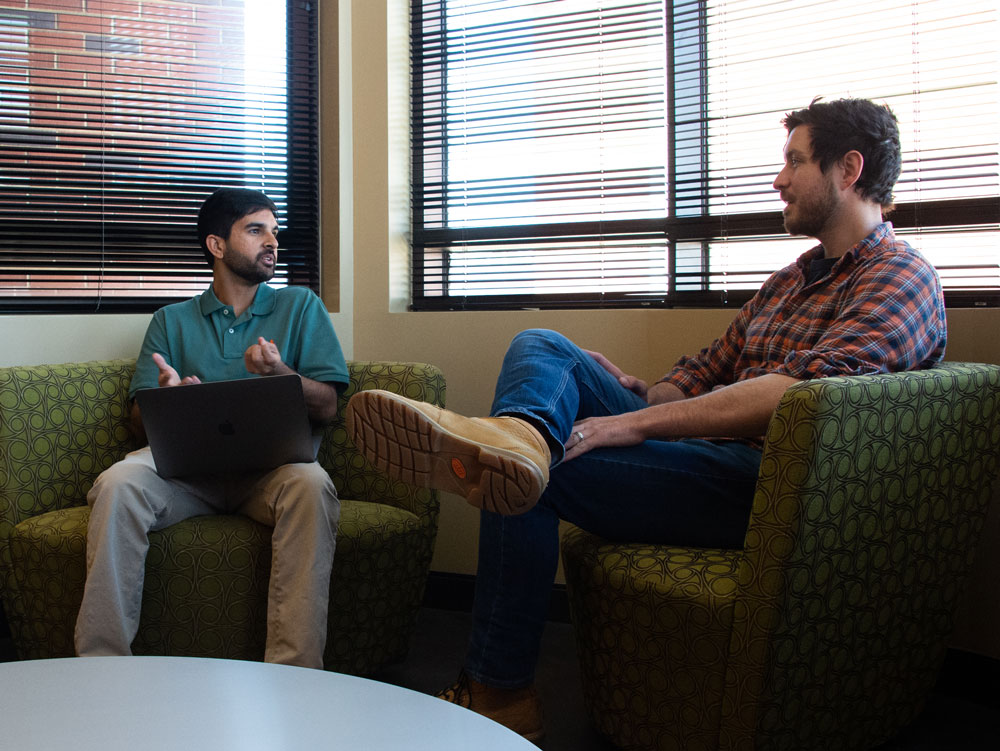
Research Computing interns are hands-on in a world that is always changing
Patel, a senior from Gulf Shores, and Moore, a junior from Birmingham, were the first two undergraduates hired into UAB IT Research Computing’s new paid internship program when it launched in January.
-
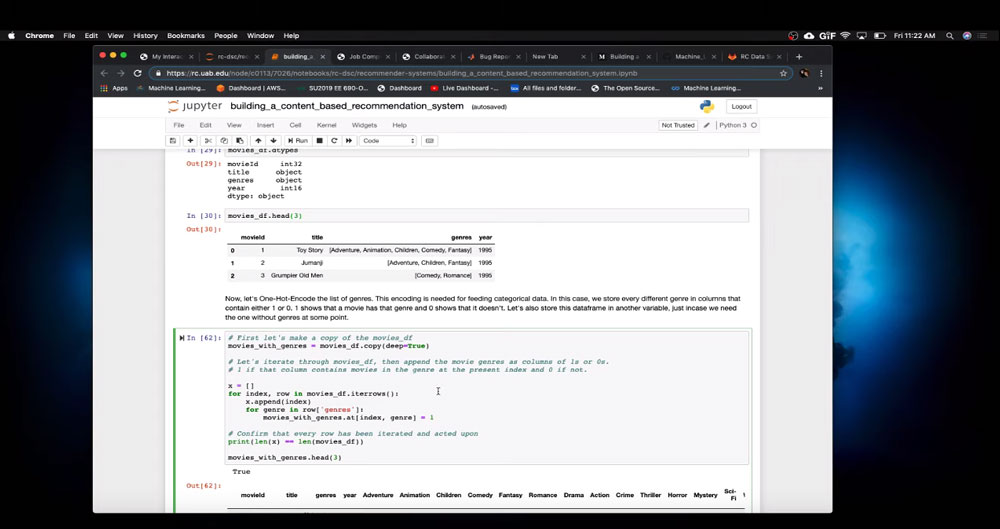
Data Science Club walks newbies through the hottest tools in research
Monroe and colleague Ravi Tripathi, a software developer, found a way to scale up their training efforts. In April, they launched the Data Science Club. This isn’t a traditional lab journal club — it’s more like the Dollar Shave Club for machine-learning and biostats. For free.
-

David Crossman deciphers the human genomes for undiagnosed patients
Frank Skidmore, M.D., assistant professor of neurology, is studying brain images for his research on Parkinson’s disease. For Skidmore, the intricacies in size, shape and surface folds of every brain image must be mapped to a template to allow comparisons. The computational power of the UAB supercomputer allows him to “see” in five dimensions for certaintypes of brain images —the computer is able to work in those higher-dimensional spaces that humans cannot. His research can lead to faster diagnoses for his patients —and better treatment.
-

Kristina Visscher studies how long term visual input affects the brain
Kristina Visscher, Ph.D., assistant professor of neurobiology, is studying visual processing, analyzing huge amounts of data per subject. Her work studies how the brain adapts after long-term changes in visual input, such as macular degeneration.
-

Ryoichi Kawai is laying the groundwork for a better infrared laser
Ryoichi Kawai, Ph.D., associate professor of physics, uses the supercomputer for what may be the largest calculation on campus —determining the electronic structure for a cube made up of just 216 atoms of zinc sulfide doped with chromium or iron. His research is laying the groundwork for a better infrared laser, which could be used for a variety of treatments from shrinking tumors to removing kidney stones.
-

Adrienne Lahti and her team research schizophrenia
Dr. Adrienne Lahti, director of the Division of Behavioral Neurobiology at UAB, is a new user to the research computing cluster. When she submitted a grant to the National Institutes of Health in 2017, she received the NIH’s highest possible impact score — placing her application in the first percentile.
-

David Crossman deciphers the human genomes for undiagnosed patients
David Crossman, Ph.D., bioinformatics director in UAB’s Heflin Center for Genomic Science, deciphers the sequences of human genomes for patients seeking a diagnosis in UAB’s Undiagnosed Diseases Program. The expanded computer cluster allows him to get answers in hours as opposedto weeks. Speeding the processing time to crunch genome sequencing data means faster diagnoses — and faster treatment and better health outcomes — for his patients.
-

Hassan Fathallah-Shaykh uses new mathematical models to detect cancer
Dr. Hassan Fathallah-Shaykh, a professor of neurology, works to detect cancer in MRI images using new mathematical models and techniques. Using the new technology implemented by this project, Hassan working with an engineering student, won the 2016 Worldwide Multimodal Brain Tumor Image Segmentation Challengeby analyzing 118,000 MRI images to detect cancer in less than 12 hours. “The supercomputer worked like magic, without any glitches. It is evident that I would not have been able to compete without the supercomputer resource,” he said.
